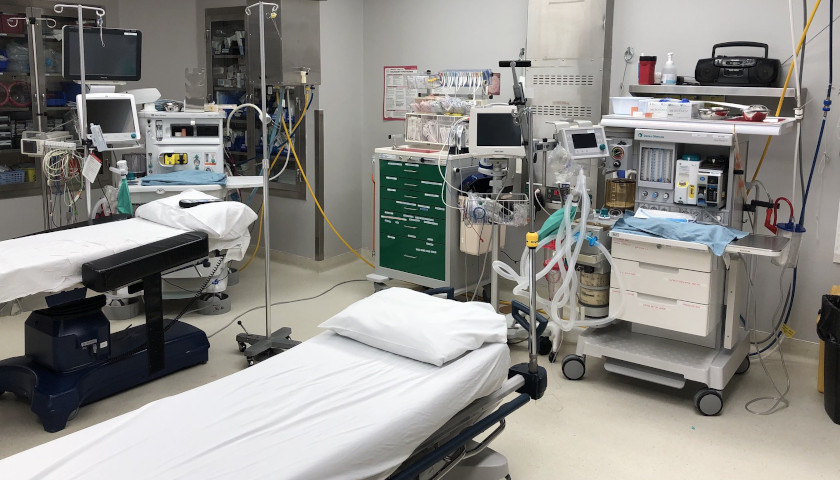Ventilators across the world are in scarce supply as the number of coronavirus patients continues to rise, but a Detroit doctor has provided health care workers with an ingenious solution.
To make sure his hospital is prepared, Dr. Alain Gauthier, an anesthetist at the Perth and Smiths Falls District Hospital in Canada, rigged a single ventilator to treat up to as many as nine people at once.
The do-it-yourself ventilator Gauthier created pairs patients of “similar size and lung capacity” and runs “two hoses from one ventilator running at double power,” according to MEA Worldwide.
One of Gauthier’s colleagues shared pictures of the ventilator system on Twitter, saying it took Gauthier only 10 minutes to complete.
So in ten minutes the evil genius who is one of our GP anaesthetists (with a PhD in diaphragmatic mechanics) increased our rural hospitals ventilator capacity from one to nine!!! pic.twitter.com/yNmuCCDbWd
— alan drummond (@alandrummond2) March 17, 2020
Gauthier, who holds a Ph.D. in respiratory mechanics, learned about the technique from watching a YouTube tutorial created by Dr. Charlene Babcock, an emergency physician in Detroit, to help doctors respond to the pandemic.
Babcock published a 2006 study about ventilator augmentation that claimed it is possible for ventilators to accommodate more than one patient at a time.
“In a catastrophic situation, when there are more patients who require ventilators than there are ventilators available, simple modification of the ventilator circuit could help absorb the extra burden,” the study said.
Gauthier told the CBC that the rigged ventilator is a last resort, but he is prepared to use it. Working at a rural hospital in Ontario, Gauthier said he wants to avoid the tough ethical decisions Italian doctors are now facing on who receives medical treatment.
Italian hospitals have been overwhelmed with COVID-19 patients and the country had lost nearly 5,000 people to the virus as of Saturday afternoon.
“We have to prepare ourselves for all the intensive care units in the province to be swamped. So we have to become more comfortable with things we don’t usually do as often,” said Gauthier.
Another option being developed is the use of a 3-D printed circuit splitter and flow restriction device. The device has yet to be tested on humans, but allows for “multiple patients to be ventilated with the one anesthesia machine or intensive care ventilator,” according to Prusa Research.
It takes Babcock’s concept “one step further by enabling the selective application of flow resistance to one of the patient’s inspiratory limbs, thus enabling the ventilation of two or more patients with differing inspiratory pressures.”
– – –
Zachery Schmidt is the digital editor of Star News Digital Media. If you have any tips, email Zachery at [email protected].
Photo “DIY Ventilator” by Alan Drummond.




